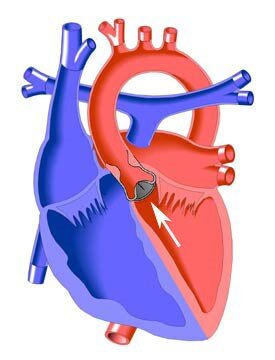What are the Symptoms of Aortic Stenosis?

Writer: Prof. Dr. Yavuz Besogul
Categories:
aortic stenosis The patient feels shortness of breath even with the slightest effort. The patient has difficulty breathing while walking and climbing stairs. There may be chest pain with difficulty breathing. Additionally, if aortic valve stenosis is severe, the patient may faint. The risk of death is quite high at this stage. In aortic stenosis All possible symptoms can be listed as follows:
– Fatigue quickly with effort
-Shortness of breath
-Chest Pain
– Dizziness
– Palpitations
- Weakness
– Fainting
What are the causes of Aortic Stenosis?
Aortic stenosis is a disease of old age. It is a natural valve disease that can occur in the elderly. Wear with age, vein If stiffness and calcification affect the aorta, narrowing of the aortic valve occurs. Aortic stenosis also occurs at a younger age. Aortic stenosis can be caused by birth defects. The aortic valve can wear away because the heart has two congenital leaflets instead of three. Rheumatic heart disease and valve infections are some of the causes of aortic stenosis.
What is Aortic Stenosis?

The aorta is the largest blood vessel in the body. Aorta is an important blood vessel that carries clean blood from the heart to all organs. The average blood carrying capacity of the aorta is 6-7 liters. There is also the aortic valve, one of the heart's four valves. The aortic valve is the valve through which clean blood flows from the left ventricle before going to the body from the aorta. The aortic valve ensures that blood flows in the correct direction and that blood does not flow backwards. In some cases, problems such as narrowing or insufficiency of the aortic valve occur. If the aortic valve becomes calcified and the deformation narrows, it cannot be opened. As a result, it is difficult for the heart to pump blood through the narrowed aortic valve. For this reason, the myocardium is strained and kept under load. This causes the heart muscle to thicken and fail. Aortic stenosis treatment If left untreated, heart failure can also be life-threatening.
Frequently Asked Questions About Aortic Valve Stenosis
Is Age a Risk for Aortic Valve Stenosis?
Yes, the aortic valve weakens with age due to calcification It may narrow.
Is Aortic Valve Stenosis Seen in Babies and Children?
Aortic valve stenosis, or narrowing of the aortic valve, can also occur during infancy and childhood. Some of these children may experience symptoms such as chest pain, dizziness, and fainting. Children with mild aortic stenosis may require lifelong monitoring as the stenosis may progress.
What Are the Symptoms of Aortic Valve Stenosis in Children?
Children with aortic stenosis problems may not be able to eat enough and may lose their appetite. Moreover aortic stenosis Children with this condition do not gain enough weight. Children get tired quickly and become lazy.
Can Children with Aortic Valve Stenosis Play Sports?
In this case, it would be appropriate to consult a pediatric cardiologist.
What is Bicuspid Valve?
Normal aortic valve has 3 leaves. If it has 2 leaves, it is called mitral valve. Against the pumping power of the heart, it causes the valve to wear out earlier than it would normally do for the 3 leaflets to do their job.
How Does Aortic Valve Stenosis Affect the Heart?
In aortic stenosis The lid does not open easily. Blood cannot flow freely either. It tires the heart. The heart becomes unable to handle this workload. This deficiency occurs over time.


